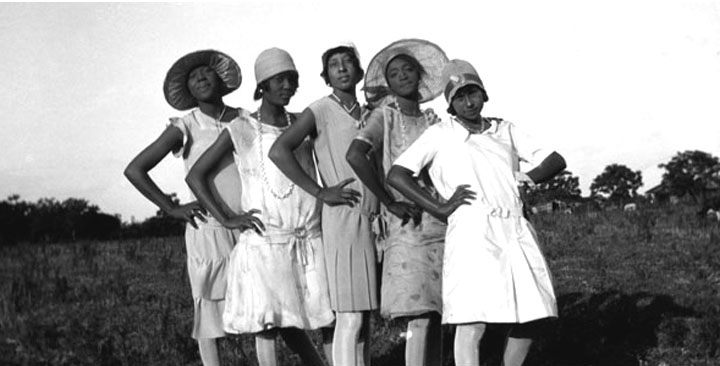How to Protect Your Family Papers

The Carrie Brown family, c. 1925. Erik Overbey Collection.
Control temperature and humidity – Two of the most harmful things to paper are temperature and humidity. Ideally, conditions in the area in which your papers are stored should be around 60 to 70 degrees Fahrenheit and 40 to 50 percent relative humidity. Those conditions are not always easy to accomplish in your home. You should strive, however, to maintain consistency in both. You should also make sure the location of your papers is neither too dry nor too damp. And don't keep your papers in the attic or the basement, but in a closet that does not abut an outside wall.
Watch out for light – Light is another factor that affects the longevity (and legibility) of paper. It is especially damaging to color paper (color photographs, watercolors, textiles, newspaper, etc.). Store your papers in a cool, dark place. Don't display them, or, if you do, display a copy of the item or use UV glass.
Isolate infested material – Mold, mildew, and insects can cause serious damage to paper. If you discover something has become infested, contain the problem right away by sealing the item immediately in a zip-lock type bag. Then you can tackle the problem that created the mold, mildew, or insect infestation. Usually this means improving environmental conditions or eliminating the sources that attract insects (such as food crumbs or dust). Word of warning, however, serious mold problems require a professional to handle. Once the problem has been addressed, you need to determine whether the infected item can be salvaged or will have to be discarded.
If it's not reversible, don't do it! – Never use tape or glue. Do not laminate items. Lamination is permanent and cannot be undone. If you want something preserved in that way, use polyester film to encapsulate the document. This will provide the support you are looking for without causing permanent damage. Regular tape and glue have chemicals in them which can and does harm paper. Plus, they break down over time and leave residue. You can purchase archival tape from a reputable archival supply house. Staples and older paper clips are also harmful. They both rust. In addition, paper can tear when removing staples. Instead, use stainless steel paper clips or, even better, plastic ones, to hold paper together.
Handle carefully – When handling large items like maps, lift them by their diagonal (kitty-corner) edges. Wear gloves when interacting with photographs, negatives, CDs, DVDs, or other material easily damaged by the oils in your hands. Don't wear gloves when dealing with paper, however, which is more likely to be damaged by the gloves. Just be sure your hands are clean and don't over handle. When cleaning CDs or DVDs, use a clean, dry cotton cloth and wipe in a straight line radiating out from the center. Never wipe in a circle. Never eat or drink while working with materials.
Just because it's digitized doesn't mean it's preserved – Digitization of your papers is a good way in which to reduce handling of them. But it is not yet considered a preservation tool. And if you take on the responsibility of digitizing something, you must also take on the responsibility of preserving that file by migrating it from format to format as technology changes.
Label carefully and accurately – If labeling photographs, use pencil (not a regular pen) and write lightly on the back side. Do not press down too hard or you will indent the reverse side. If writing with a pencil makes it difficult to read, use a water-based, acid-neutral pen (which can be purchased at most archival supply companies). To label a CD or DVD, write along the inner rim where the data layer is not located using the same type of pen mentioned above. Label your items with date, author, or subject. When unsure, be sure to include a question mark so that your descendants won't be misled.
Use archival quality products to store your papers – Don’t trust retail outlets that claim their photo albums, sleeves, and the like are "archival" or "acid-free." Buy your materials from reputable library or archives vendors such as Light Impressions, Hollinger-Metal Edge, Gaylord Brothers, or University Products. Be sure whatever you buy has passed the PAT (photographic activity test), is low lignin in content, and is non-buffered.


